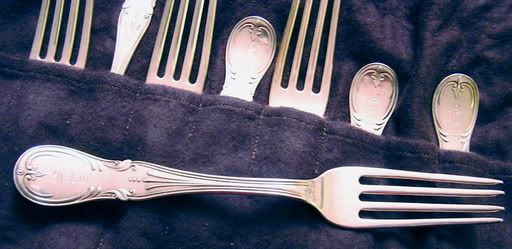I have a set of what I think is coin silver flatwear. I always thought it was plate, but with further research I began to wonder. It is from the mid-1800's as that is when my ancestor (the monogram) lived and also when Beggs and Smith operated in Cincinnati, Ohio (1848-1861).
There is no missing silver anywhere on it and it would certainly have a few chips by now, right? Also, it sounds like sterling when they clink together and seems lighter then it should for the thickness of the metal.
The only marks are Beggs and Smith.
How can I know for sure?


btw: You don't have that mark in your wonderful encyclopedia. Feel free to take this one if you like.
.